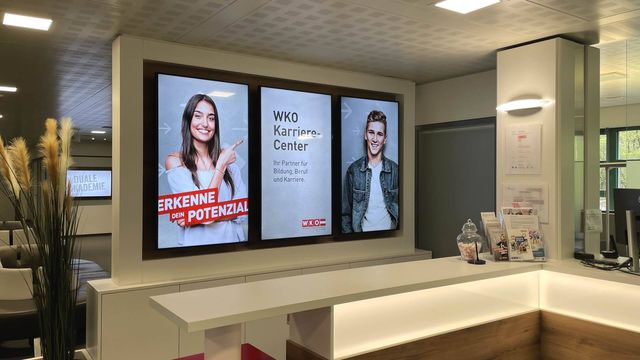Revolutionizing Dining: The Rise of Restaurant Digital Signage and Menu Boards
Revolutionizing Dining: The Rise of Restaurant Digital Signage and Menu Boards

The idea of innovation and technology is vital in the current restaurant industry to improve customer experience and overall management. Digital signage for restaurants are one of the most effective trends that are being implemented in restaurants today. From creating instant appeal with promotional signs to ensuring effectively communicating the menu used by the restaurants, digital signage is revolutionizing its usages.
What is Digital Signage?
Digital signage involves the use of electronic screens to display messages in the form of images, videos and or information as they happen. These screens are best positioned in restaurants to display the menu, offers, and any other message that the management wants to pass across. Due to the development of the content management systems and the possibility to use various types of displays, restaurants can send time-sensitive and media-rich messages.
Digital Menu Boards: The Heart of Restaurant Digital Signage
One of the most frequent and useful digital signage solutions for restaurants is digital menus. These are digital screens that stand for static menus that can be easily changed and modified as compared to the normal ones. As for the advantages of digital menu boards, they can be listed as follows:
• Menu and price changes can be made instantly
• Highlight specials, combos, and limited-time offers
• Include appealing pictures and videos of the dishes
• Minimize the number of errors or mistakes made in orders to enhance efficiency and decrease the time customers have to wait.
For the quick-service restaurants, the use of digital menu boards for restaurants is especially beneficial as it is convenient and enables the restaurants to easily advertise upsell products as well as time-sensitive offers.
Benefits of Digital Signage for Restaurants
1. Improved Customer Experience
It also plays the role of improving the appearance of the business by creating a contemporary and vibrant atmosphere that complements the dining experience. This way there are no confused looks from the customers because the visuals are well created to capture their attention, and the information is well presented for easy understanding of what to order. In fast service industries, digital menu boards help to reduce the time taken to decide and serve the customers.
2. Easy Updates and Real-Time Flexibility
Compared to traditional paper menus, the electronic ones allow for a change in the content in real time without having to incur the costs of reprinting. Menu management is thus flexible to allow for alterations, such as change of price, addition of a new dish or modification of nutrition information to be made through a content management system.
3. Boosts Sales and Upselling Opportunities
A good design of digital signage can be used to draw attention to high-margin products or promotions and combination offers. Some of the ways in which menus may be managed include dayparting, where a restaurant has only breakfast, lunch, and dinner menus but does not change the physical menus.
4. Cost-Effective in the Long Run
The cost of purchasing digital signage technology might be quite expensive but it is worth the investment in the future. Restaurants avoid constant expenses on printing new signs, do not spend time to update them manually and gain more sales through promotions and suggestions.
5. Enhances Branding and Engagement
Digital signage also gives the opportunity to share the brand’s story, show some additional content or focus on the workers and customers. This is because it establishes customer relations and strengthens the image of the brand, especially within the respective market.
Applications Beyond the Menu
It is also not only about menus. It is becoming popular for restaurants to incorporate digital displays in various aspects of the eating establishments:
• Screens at the reception points to inform customers of their waiting time.
• Self-service ordering and payment terminals
• TVs that display live feeds, social media feeds or trivia
• Announcements and training material for the staff
These applications make the operations easier and enhance the satisfaction of the customers as well as employees.
Selection Criteria for Implementing the Digital Signage System
The following are some of the factors that restaurants should consider while choosing the right digital signage solution:
• Display type and size: Depending on the space available and location of the screens, one has to get the type of screens that will be visible enough and at the same time can be durable.
• Content management system (CMS): It is an effective tool for creating, editing and publishing content for different screens or places.
Integration features: Consider systems that can link with POS systems, inventory management software or online ordering system.
• Help and adaptability: Select a provider that provides help and that can adapt to the growth of the business.
Final Thoughts
In this notion digital signage is not only technology change but also investment in customer experience, brand achievement and enhancement of business flexibility. In the current market, for the restaurants that want to win the competition and have more customers, using digital menu boards and signages is not a luxury but a necessity.
With changing trends in eating out and increasing customer demands, digital signage helps restaurants to provide timely, relevant and compelling messages that are likely to increase sales. Attract more customers to your small café or at least enhance your image at the chain of restaurants – highlight your walls with digital signage.